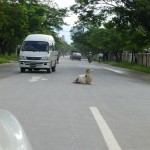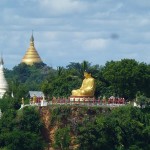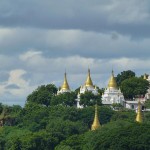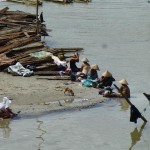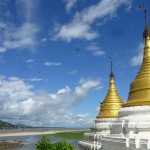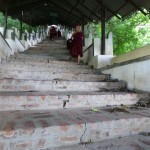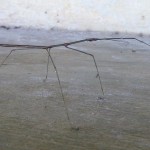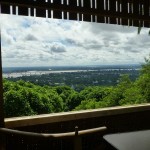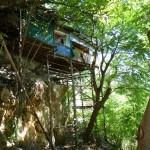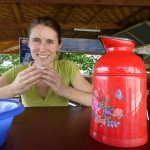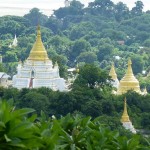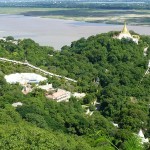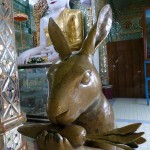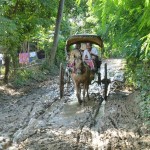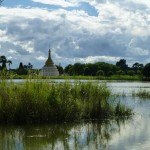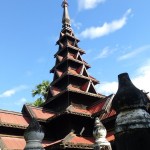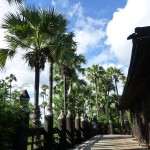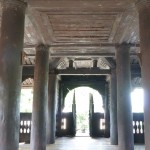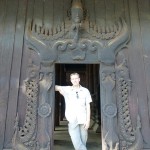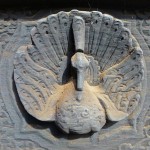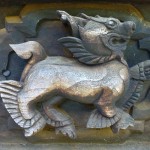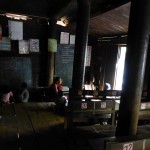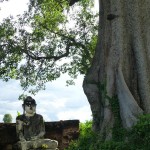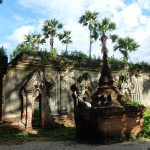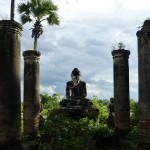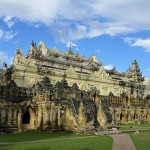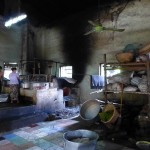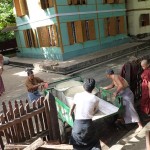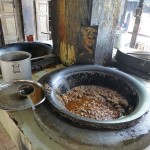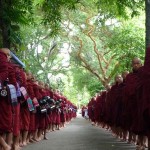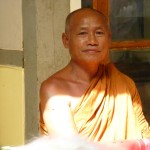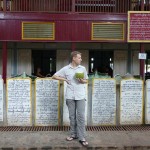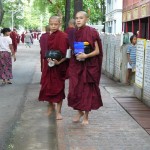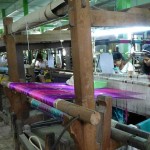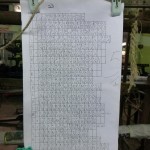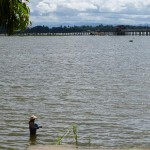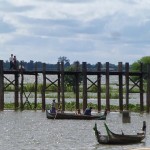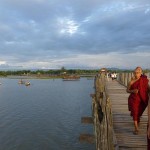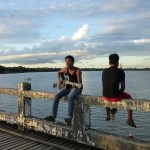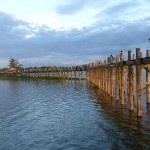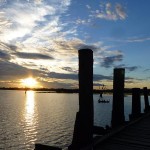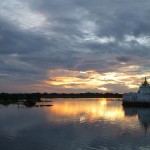Next day we made a tour to Sagain – with a sweaty climb up the Sagain Hill, Inwa – with a „Karren, der im Dreck steckenblieb“ and Amarapura – with an >160 years old and 1,2km long teak wood bridge…
Sagain Hill is spiked with pagodas and temples – countless. The way up (must be more than 1000 steps) was quite a workout – on the top we had a cup of tea in a questionable clean cup (no, there was no side effect) on a terrace with very nice view on shaky sticks… When checking out the temples we found a quite good artist up there as well and we supported the local art scene with a bit of extra revenue. Also quite interesting in the temple the big rabbit next to the Buddha – he used to be a rabbit in a former life!
Inwa used to be a capital of the kingdom, but now is a farmer village with some day tourism and not a lot of paved roads.
Sounds romantic, but after a few days of heavy rain fall the mud is deep enough to sink 15cm deep with your feet… Either barefoot (for a multikilometer hike not the most comfy solution) or a horse cartage. Ok, 2nd option – but it also sank in a whole of mud and it required 4 people to get it out again… Apart from the fact that we were muddy all over, the trip was worth is – old pagodas and temples, some fallen apart, some still intact and a very nice old teak monastery which is still used – to pray, for social life and in the corner as a school. Even 100 years and more ago some researchers were surprised that most of the rural population was able to read, write and doing calculations. This is due to the fact that the monasteries have always been a center of knowledge and also education.
In Amarapura there is a huge monastery where lots of tourists watch the food handout to the monks (interesting to sneak into the kitchen but the tourist crowed later on makes it a kind of “zoo”, not recommended to joint this one) and the old teak bridge: U Bein, where life is vibrating with locals as well as tourists enjoy the sunset.


